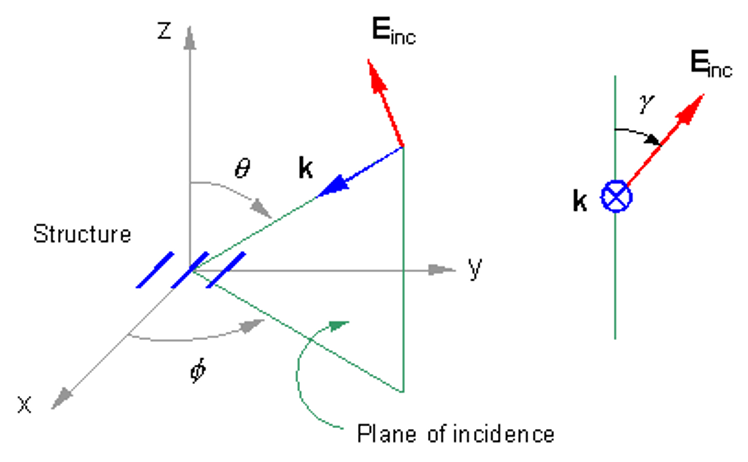Search for answers or browse our Knowledge Base.
Guides | Models | Validation | Blog
-
Guides
-
-
- Complete Workflow: Modeling, Feeding, and Tuning a 20m Band Dipole Antenna
- DIY Helix High Gain Directional Antenna: From Simulation to 3D Printing
- Evaluating EMF Compliance - Part 1: A Guide to Far-Field RF Exposure Assessments
- Design Guidelines for Skeleton Slot Antennas: A Simulation-Driven Approach
- Simplified Modeling for Microstrip Antennas on Ungrounded Dielectric Substrates: Accuracy Meets Simplicity
- Fast Modeling of a Monopole Supported by a Broadcast Tower
- Linking Log-Periodic Antenna Elements Using Transmission Lines
- Wave Matching Coefficient: Defining the Practical Near-Far Field Boundary
- AN-SOF Mastery: Adding Elevated Radials Quickly
- Enhancing Antenna Design: Project Merging in AN-SOF
- On the Modeling of Radio Masts
- The Equivalent Circuit of a Balun
- AN-SOF Antenna Simulation Best Practices: Checking and Correcting Model Errors
-
-
- AN-SOF 9: Taking Antenna Design Further with New Feeder and Tuner Calculators
- AN-SOF Antenna Simulation Software - Version 8.90 Release Notes
- AN-SOF 8.70: Enhancing Your Antenna Design Journey
- Introducing AN-SOF 8.50: Enhanced Antenna Design & Simulation Software
- Get Ready for the Next Level of Antenna Design: AN-SOF 8.50 is Coming Soon!
- Explore the Cutting-Edge World of AN-SOF Antenna Simulation Software!
- Upgrade to AN-SOF 8.20 - Unleash Your Potential
- AN-SOF 8: Elevating Antenna Simulation to the Next Level
- New Release: AN-SOF 7.90
- AN-SOF 7.80 is ready!
- New AN-SOF User Guide
- New Release: AN-SOF 7.50
- AN-SOF 7.20 is ready!
- New Release :: AN-SOF 7.10 ::
- AN-SOF 7.0 is Here!
- New Release :: AN-SOF 6.40 ::
- New Release :: AN-SOF 6.20 ::
- Show All Articles2 Collapse Articles
-
-
-
-
Models
-
- Modeling a Super J-Pole: A Look Inside a 5-Element Collinear Antenna
- Simulating the Ingenious Multiband Omnidirectional Dipole Antenna Design
- The Loop on Ground (LoG): A Compact Receiving Antenna with Directional Capabilities
- Precision Simulations with AN-SOF for Magnetic Loop Antennas
- Advantages of AN-SOF for Simulating 433 MHz Spring Helical Antennas for ISM & LoRa Applications
- Radio Mast Above Wire Screen
- Square Loop Antenna
- Receiving Loop Antenna
- Monopole Above Earth Ground
- Top-Loaded Short Monopole
- Half-Wave Dipole
- Folded Dipole
- Dipole Antenna
- The 5-in-1 J-Pole Antenna Solution for Multiband Communications
-
- Extended Double Zepp (EDZ): A Phased Array Solution for Directional Antenna Applications
- Transmission Line Feeding for Antennas: The Four-Square Array
- Log-Periodic Christmas Tree
- Enhancing VHF Performance: The Dual Reflector Moxon Antenna for 145 MHz
- Building a Compact High-Performance UHF Array with AN-SOF: A 4-Element Biquad Design
- Building a Beam: Modeling a 5-Element 2m Band Quad Array
- Broadside Dipole Array
- Log-Periodic Dipole Array
- Broadband Directional Antenna
- A Closer Look at the HF Skeleton Slot Antenna
- The 17m Band 2-Element Delta Loop Beam: A Compact, High-Gain Antenna for DX Enthusiasts
- Enhancing Satellite Links: The Moxon-Yagi Dual Band VHF/UHF Antenna
-
Validation
-
-
- Simple Dual Band Vertical Dipole for the 2m and 70cm Bands
- Linear Antenna Theory: Historical Approximations and Numerical Validation
- Validating Panel RBS Antenna with Dipole Radiators against IEC 62232
- Directivity of V Antennas
- Enhanced Methodology for Monopoles Above Radial Wire Ground Screens
- Dipole Gain and Radiation Resistance
- Convergence of the Dipole Input Impedance
- Impedance of Cylindrical Antennas
-
Defining the Excitation
Excitation Panel
Go to the Setup tab in the main window and select the Excitation panel. There are two types of excitations: Discrete Sources and Incident Field, Fig. 1.

Discrete Sources
The discrete generators placed at the wire structure will be used to calculate the current distribution. The total input power in Watts can be specified, so the voltage/current sources will be adjusted accordingly to achieve the specified input power. If the input power is not specified, then the voltage/current sources will be constant, and the input power will be an output result from calculations.
Incident Field
An incident plane wave will be used as the excitation of the structure. The direction of incidence and polarization of the incoming field can be set in this panel.
The following parameters must be set for the incident wave excitation:
E-Field Major Axis
In the case of linear polarization, it is the amplitude, in Volts per meter (rms value), of the incoming electric field. For an elliptically polarized plane wave, it is the major axis of the polarization ellipse.
Axial Ratio
It is the ratio of the minor axis to the major axis of the polarization ellipse. If the axial ratio is positive (negative) a right-handed (left-handed) ellipse is obtained. If the axial ratio is set to zero, a linearly polarized wave will be obtained.
Phase Reference
It is the phase, in degrees, of the incident plane wave at the origin of coordinates. Its value only shifts all phases in the structure by the same amount.
Gamma
For a linearly polarized wave, it is the polarization angle, in degrees, of the incident electric field measured from the plane of incidence to the direction of the electric field vector, as it is shown in Fig. 2. For an elliptically polarized wave, Gamma is the angle between the plane of incidence and the major ellipse axis.
Theta
It is the zenith angle, in degrees, of the incident direction.
Phi
It is the azimuth angle, in degrees, of the incident direction.
The definition of these parameters is illustrated in Fig. 2.
When the 3D View button is pressed a user interface is enabled in the workspace, where the direction of arrival of the plane wave and its polarization can be specified easily, Fig. 3.
Note
When an incident plane wave is used as excitation, all discrete sources, if any, will not be considered in the simulation.


